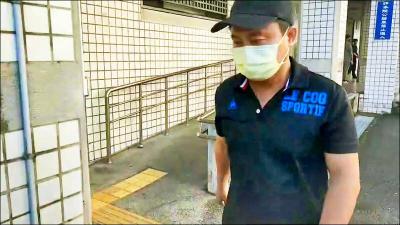As the world faces food shortages, a Taiwan-based international research institute is seeking to alleviate malnutrition and poverty in developing counties by improving the production and consumption of vegetables.
Since its founding in 1971 in Shanhua Township (善化) in Tainan County, the Asian Vegetable Research and Development Center (AVRDC) — the World Vegetable Center — has changed the lives of millions of farmers in Asia and Africa by teaching them how to grow, store and transport vegetables as well as how to cook them.
Over the past 37 years, the AVRDC has seen its size and role expand rapidly as improved vegetable production helped reduce malnutrition and poverty.
“We are not trying to use vegetables as a substitute for [other] food, but rather as an addition to the food basket, to help farmers become better nourished and grow out of poverty,” said the center’s director, Dyno Keatinge.
Malnutrition represents a serious global problem. According to figures released by the WHO, 2 billion to 3.5 billion people suffer from malnutrition and 1.1 billion people are underweight.
By improving vegetable production and raising yields, nutrition levels can be improved while allowing farmers to make more money by growing and selling better vegetables, Keatinge said.
As a non-profit organization, it gets funding from dozens of governments and foundations, which this year totaled US$18 million, to operate regional centers in Thailand, Tanzania and India. AVRDC also plans to open a regional center in Central America.
One main task for the center is to gather germplasms — seeds or plant culture — of indigenous vegetables from around the world and store them so they won’t become extinct. So far, AVRDC has stored 56,136 germplasms from 150 countries.
Germplasms are planted at the center to record their growth and characteristics for long-term storage — up to 100 years.
Thousands of species of indigenous vegetables exist in the world, providing important nutrition to people in developing countries, said Lin Li-ju of the AVRDC’s international cooperation unit, pointing to the plots of land and greenhouses where the plants had been grown.
“Take sweet potato shoots and leaves for example, they were the poor men’s diet or pig feed in Taiwan in the past. But in recent years they have become a popular dish in households and even at banquets because they are high in vitamin A, [vitamin] E and iron,” she said.
AVRDC researchers are also experimenting with natural crossing to improve the quality of vegetables and to make them pest and heat-resistant. Genetic engineering was monitored at the center but not actively pursued, officials said.
Peter Hanson, a plant breeder, held up a plate of egg-sized yellow tomatoes, the result of several years of research.
“This Golden Tomato contains three to six times more beta carotene, which is the precursor to vitamin A. A single improved tomato like this can provide all your daily vitamin A needs,” he said, popping a Golden Tomato into his mouth.
AVRDC also teaches farmers in Asia and Africa how to irrigate vegetable plots, pack and transport vegetables or preserve them.
Research shows post-harvest loss can be up to 50 percent if the product is not transported properly, resulting in a waste of produce and a loss of income for farmers.
Often very simple actions can have great effects.
“In many countries, farmers hand over tomatoes to collectors who load the tomatoes onto carts or trucks. By the time the produce has reached the destination, the tomatoes at the bottom are crushed,” AVRDC socioeconomist Katinka Weinberger said.
“We teach the farmers to separate green tomatoes from red ones, pack them into bags and put green tomatoes at the bottom and red ones on top. As a result, the farmers have cut down post-harvest waste and get a higher price for their tomatoes,” she said.
AVRDC researchers also try to change farmers’ harvest and storage habits, so that vegetables can be delivered to the market speedily and in good shape.
“In some countries, farmers harvest vegetables around noon and let the vegetables sit under the sun while they wait for the collector. The collectors arrive by 5pm or 6pm. By the time the vegetables have reached the market, they are no longer fresh,” Weinberger said.
“We advise them to harvest vegetables at dawn when it is cool. While waiting for the collectors, we teach them how to keep the vegetables cool. That is, they can put a soaked sack on top of the packed vegetables. That can bring down the temperature by a few degrees,” she said.

South Korean K-pop girl group Blackpink are to make Kaohsiung the first stop on their Asia tour when they perform at Kaohsiung National Stadium on Oct. 18 and 19, the event organizer said yesterday. The upcoming performances will also make Blackpink the first girl group ever to perform twice at the stadium. It will be the group’s third visit to Taiwan to stage a concert. The last time Blackpink held a concert in the city was in March 2023. Their first concert in Taiwan was on March 3, 2019, at NTSU Arena (Linkou Arena). The group’s 2022-2023 “Born Pink” tour set a

CPBL players, cheerleaders and officials pose at a news conference in Taipei yesterday announcing the upcoming All-Star Game. This year’s CPBL All-Star Weekend is to be held at the Taipei Dome on July 19 and 20.

The Taiwan High Court yesterday upheld a lower court’s decision that ruled in favor of former president Tsai Ing-wen (蔡英文) regarding the legitimacy of her doctoral degree. The issue surrounding Tsai’s academic credentials was raised by former political talk show host Dennis Peng (彭文正) in a Facebook post in June 2019, when Tsai was seeking re-election. Peng has repeatedly accused Tsai of never completing her doctoral dissertation to get a doctoral degree in law from the London School of Economics and Political Science (LSE) in 1984. He subsequently filed a declaratory action charging that

The Hualien Branch of the High Court today sentenced the main suspect in the 2021 fatal derailment of the Taroko Express to 12 years and six months in jail in the second trial of the suspect for his role in Taiwan’s deadliest train crash. Lee Yi-hsiang (李義祥), the driver of a crane truck that fell onto the tracks and which the the Taiwan Railways Administration's (TRA) train crashed into in an accident that killed 49 people and injured 200, was sentenced to seven years and 10 months in the first trial by the Hualien District Court in 2022. Hoa Van Hao, a